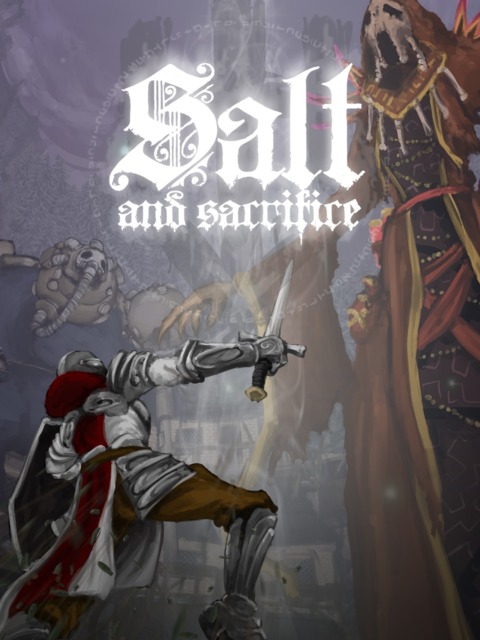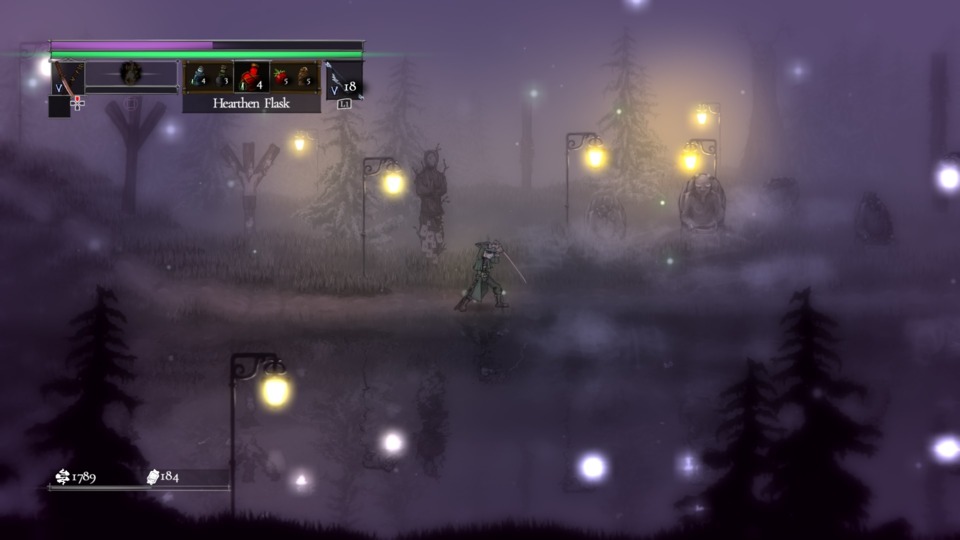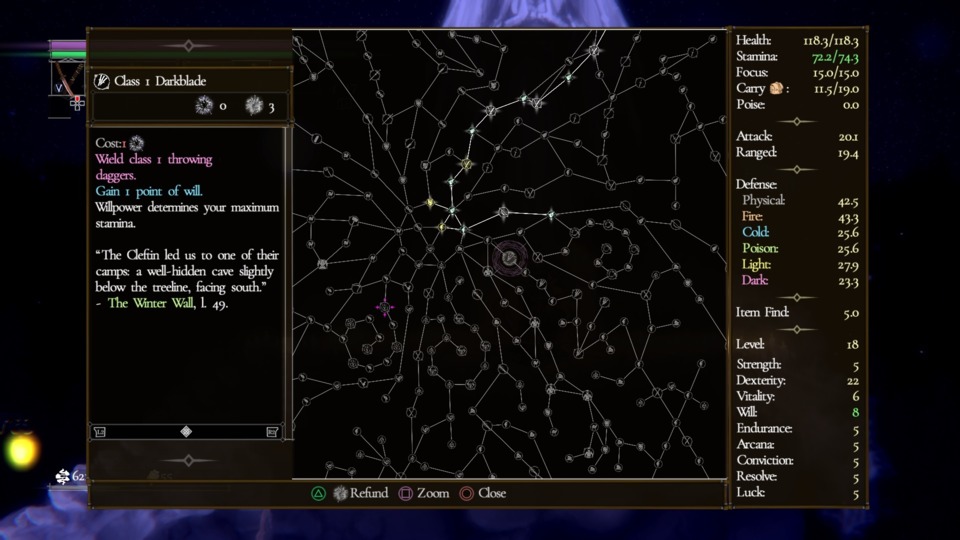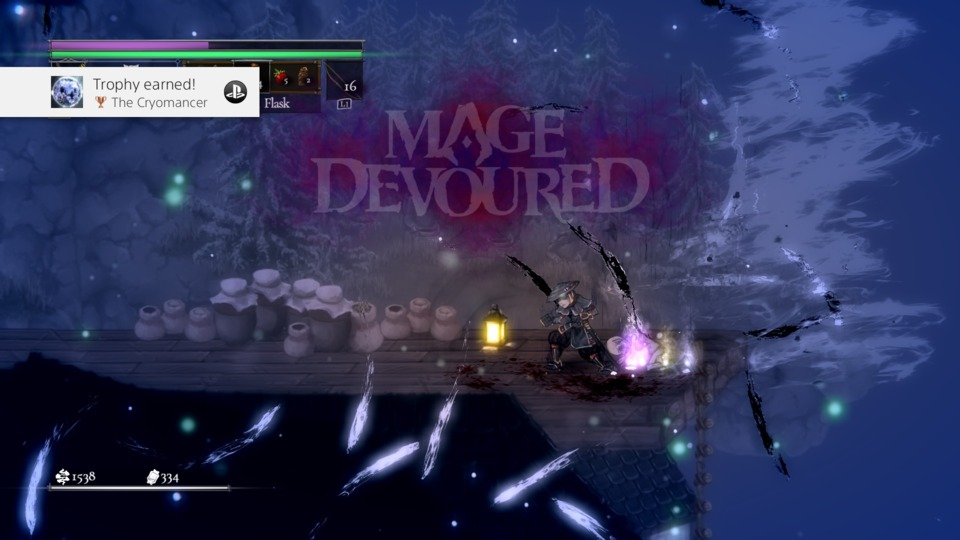Indie Game of the Week 364: Salt and Sacrifice
By Mento 0 Comments

Welcome all to another edition of Indie Game of the Week where we dare to go far, far outside of our gaming comfort zones in pursuit of the unknown and the untested. My daring choice this time is an explormer that has Souls tendencies; not something I tend to cover all the time on here, nope. This goof really kinda hinges on the assumption that I have regular readers and aren't just being randomly discovered by visitors who accidentally clicked on the wrong link on their Twitter feeds, huh. So, yeah, it's business as usual in my neck of the spooky, monster-filled woods as I check out Salt and Sacrifice, the follow-up to Ska Studio's similarly grim Souls-fest explormer Salt and Sanctuary. It really felt like this game just disappeared without a trace after its release; besides former staffer Jason Oestreicher giving it props (it made his 2022 GOTY list) I didn't really hear much about it. Shame, because it's shaping up to be something I'm definitely into, given it wisely saw how many more Soulsian explormers had popped up since Salt and Sanctuary—which at the time was a novelty, rather than the norm for modern Indie explormers—and chose to distance itself with a few meaningful changes to the formula. (And also way more color; Ska Studio is best known for their early monochrome enterprises so it must've shocked them to discover their various graphics programs had entire chromatic palettes to choose from.)
The world of Salt and Sacrifice has your morally flexible protagonist arrested for a crime of the player's choosing (this also determines your starting item, like a bunch of bombs for arsonists, though I am curious as to why they weren't taken from you) and opting for the alternative to prison and execution which is to become an "inquisitor": nominally holy warriors press-ganged into dealing with a scourge of villains that have adopted monstrous guises and equally monstrous magical powers, running rampant around several corners of the world. Sending violent criminals to fight monsters must be seen as a win-win for the justice system of this world, I'm sure. Your arrival to the embattled area has your warden killed in action, followed by yourself: however, since you drank some kind of mystical whatsit to bind you to your current mission, not even death can end your sentence prematurely. Not until the mages are all defeated, anyway. Gameplay-wise, it's an action-RPG like its inspirations, with a variety of different attacks (based on the weapon type), a block, a dodge roll, a ranged weapon that is accessed by a different attack button for convenience's sake, and a Rage system that allows you to cast spells and buffs depending on the gear you have. Said gear can be upgraded or replaced as you keep playing, the former option existing for those sets that have particular applications (like high resistance to specific elements) or just happen to be aesthetically "your thing".

As in the previous game, levelling up essentially means buying nodes on a dizzyingly large skill tree: while intimidating at first, the only nodes of importance are those connected to your preferred melee and ranged weapon(s) and your armor type (light/heavy). Every other node just increases your stats: the usual assortment of utility stats like endurance (higher equipment weight limit), vitality (health), luck (more item drops), or will (more stamina) as well as the more focused combat stats like strength (heavy weapons), dexterity (light/ranged weapons), or arcana (magic). Most weapons tell you what they scale with, and if that's not enough of a hint then the nodes that allow you to equip stronger versions of that weapon type will naturally be connected by a bunch of nodes for the associated stat you'll need to use them effectively. It's a bit strange they still have this system for incremental stat increases instead of just the usual left-right sliders, but then those loquacious cads also added a little bit of lore to every single node to give the game that much more flavor text to consume for us fantasy prose-loving nerds.
Truth be told, I was fully expecting this to play out much like the original Salt and Sanctuary, but while the combat and the vibe are certainly similar—wouldn't be a Soulslike without dodge rolls, parries, and a bleakly saturnine atmosphere—the structure's quite a bit different. For one, the game now employs a discrete stage-based format not too dissimilar to the original Demon's Souls, where you can continue to make progress in one world after opening up the route to the next but you'll more than likely run into obstacles both figuratively insurmountable (higher-level enemies and bosses) or literally insurmountable (a traversal tool you don't have yet). I'm the stubborn sort that spent hours in the Hinterlands, the unnecessarily-huge opening area of Dragon Age: Inquisition, so I'm not comfortable leaving this first locale behind until I've explored (and noted down) the furthest contours I can presently reach and all the bosses I'd rather hold off on until I'm better equipped to deal with them. A sensible person might be better off heading to new areas as soon as they're available, as the difficulty curve and key item acquisition is no doubt configured for that approach. Still, though, the bosses I've met in the first region that live beyond the point where I could've bailed and left for the next world have been (mostly) reasonable, so it doesn't feel like I'm getting punished for procrastinating. Will always appreciate a game that can roll with my obstinacy.

The game also takes to another classic explormer, Metroid 2, for inspiration in that in addition to the unique progress-blocking bosses you also need to follow your core directive to seek out wayward mages and devour their souls. A mage, if one's ever nearby, will continue to pester you with magic attacks and summons before vanishing after some amount of damage; however, if you find a certain totem you can "join the hunt" and this will allow you to track your quarry around by following a wispy UI compass marker that will eventually allow you to corner those pesky mages in their lairs and put an end to them. Each mage is focused on a particular element—lightning, fire, ice, water, and venom are the ones I've found so far—and every mage of a single type more or less fights with the same tactics, though the tougher ones tend to add more to their repertoires to keep you on your toes. More importantly, both the mage and its summons drop special elemental loot that can be transformed into equipment tied to that element, such as weapons that employ that element as damage, accessories and armor that can defend against that element or provide other benefits, and trophies to decorate your tent if you're the nasty type looking for bragging rights. Defeating one electromancer, therefore, might provide the gear you need to make the next electromancer that much easier to handle—or, in the case of weaponry, make mages of the opposing elements more vulnerable to your attacks. This first region alone had two "regular" bosses and at least seven mages, so they're a much more ubiquitous threat than they first seem. I've not played a whole lot of MonHun, but I recognize much of this system from that series; especially the parts where the boss keeps running away, because that's always fun.
For a Soulslike game, it's also pretty forthright and user-friendly about most of its mechanics, though perhaps less so with a few. For instance, it tells you what all the stats do, which is something Souls didn't for the longest time. Whenever you level up, you're given items you can then spend on the skill tree: this means there's no point hoarding salt (the level-up currency) if you're holding out for one high-value node or another since those skill tree items will sit comfortably in your inventory until you need them. The other currency, silver, is always halved every time you die (salt just needs to be recovered from your corpse, as is standard) but you can spend it on items that provide a slightly smaller amount of silver when used which works as a sort of makeshift bank system. I was slightly unhappy about all my silver disappearing before I realized what was what, but then so far I haven't found a whole lot of merchant NPCs with anything worth buying. Their XP items especially give you a terrible return on investment. There's no map, which is typical for Souls if less so for explormers in general, but the discrete stage-based format does alleviate this somewhat by making each area manageably compact. You might still want to take personal notes of various roadblocks all the same though: there's been pulley/ziplines I've been spotting everywhere that I now realize I should probably be keeping tabs on. Ammunition also replenishes at resting spots like the usual potions for healing and mana recovery, and all three can be upgraded further with rare items. Subsequently, there's no reason to not go nuts with ranged attacks if an opportunity to kill something from afar affords itself, though most enemies are surprisingly strong jumpers so be aware your distance advantage won't last long. There's also a limited form of fast travel within areas—some of the checkpoint obelisks have torches on them, and these are the ones you can warp to—and traversal in general feels fairly swift, though I've yet to acquire anything along the lines of an air-dash or double-jump yet which really gives these explormers the fluidity of movement that they thrive on (especially if you're going to be backtracking a lot).

On the whole, the significant changes made to Salt and Sacrifice does give its gameplay loop a different enough feel to the original to stand out, while still playing to that original's strengths of a semi-deep combat system of techniques, air-juggles, and careful maneuvering along with a typically bleak atmosphere. The hub area is enormous and slowly fills with NPCs as you rescue them, with multiple options for character and gear improvement should you ever feel overwhelmed with the current degree of enemy opposition, without necessarily diminishing too much the high challenge level for which this format of game is notorious. Progress has been painstaking without feeling too much like I'm getting batted around by foes way beyond my ability to handle—though the hydromancers and their tactic of endlessly summoning flying minions that project invincible shields over the boss and then spend the rest of the time hovering out of reach have definitely been testing my patience—and I'm getting the itch to keep on exploring and activating those little dopamine kicks whenever I open up a shortcut or find a new traversal tool that'll mean a bunch of free loot in the near future. It's all good stuff for this lizard brain of mine.
Rating: 4 out of 5.
Post-Playthrough Edit: Despite some iffy hitbox business towards the end of the game (I get that the tougher late-stage bosses would use bigger AoE attacks, but they really ought to terminate at the end of their visual effects) and the amusing chaos wrought by having many optional mages floating around trolling you, the normal enemies, and each other (which, while funny, gets in the way a lot especially in platforming sections) this ended on a pretty positive note for me. I'm still not won over by MonHun mechanics in general but it was novel to see them in an explormer, at least. Very much a worthy successor to Salt and Sanctuary, doing enough different with a sufficient amount of new ideas into which they could transplant their already solid combat and progression systems.
| < Back to 363: A Little to the Left | 001-100 | 101-200 | 201-300 | > Forward to 365: Eiyuden Chronicle: Rising |
